“This is the inside story of “World Famous” Tom Murphy, Pat O’Day, Larry Lujack, Dick Curtis, Gary Taylor and the talented staff that made KJR-Seattle a great Top 40 radio station. In this detailed retrospective by Tom Murphy, who was a legendary jock in KJR’s Golden Years, the reader will find photos and other memorabilia from Tom’s personal collection,” editorial comment by QZVX.
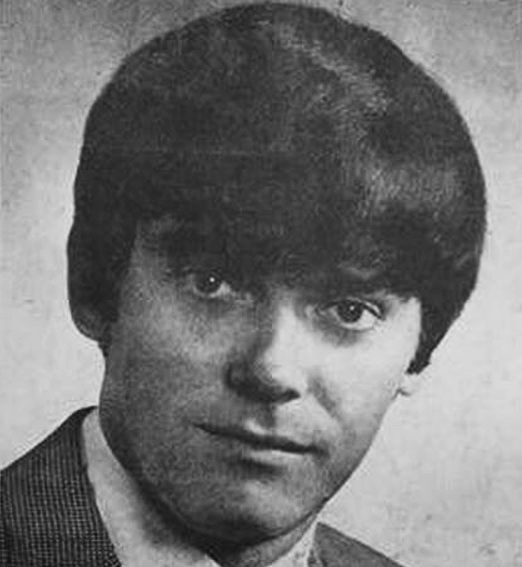
This is the fourth in a series of articles featuring “World Famous” Tom Murphy. Tom is a legendary jock who had a storied career at several innovative major market radio stations: KISN-Portland; KJR & KOL-Seattle; WCFL, WMAQ-Chicago; WIXY-Cleveland. KIIS AM & FM and KFI in Los Angeles — until it changed to a talk format. This article was composed and edited by Steven L. Smith. Tom’s friend, Gary “Shannon” Burleigh in Seattle, was an invaluable resource. Learn more about Murphy’s early years at KISN in Portland (click here).
Those of us who were around Seattle some 50 years ago, will remember the offbeat wit and humor of “World Famous” Tom Murphy. Victor Stredicke, prominent Seattle radio and TV newspaper columnist, once wrote: “Murphy is the weirdest disk jockey, who has been at KJR the past 5 ½ years.” It will become apparent in this article that jocks who worked with “World Famous” liked him and found him memorable.
Norm Gregory & Pat O’Day

The late Norm Gregory recalled: “He arrived at KJR in Sept. 1965. My reaction was ‘Whoa….who is this guy’? Tiger Tom (a name he, thankfully, left in Portland) didn’t sound like anybody else on the station. But ‘Sweet Thomas’ grew on everyone…and soon he became ‘World Famous’ Tom Murphy.”

Famous KJR deejay, program director (PD), and general manager, Pat O’Day, told QZVX: “Tom is totally unique in the radio world. He doesn’t have a big thunderous voice, nor is he a rapid, cutting edge speaker. What is he? Tom is a kind and enormously fun guy who talks to people, and connects with them through the microphone, in an unusual and a very personal way. As such, listeners by the thousands become his close and loving friends. I know Tom well. I was his boss for several years and, in my opinion, he is one of the Top 50 Best Radio Personalities of All-Time.”
O’Day had great confidence in Murphy’s abilities. When transitioning out of his ratings dominant afternoon drive time shift at KJR, Pat handpicked ”World Famous” Tom Murphy to fill the void. In Tom’s five years at KJR, he rocked around the clock: 9 to midnight Sept. 1965-’66; 10 to 3 middays Sept. 1966-’67; 6 to 9 evenings Sept. 1967-’68. Tom moved into O’Day’s 3 to 6 afternoon shift in September 1968. Murphy departed KJR in early 1971, at which time he headed for KRLA radio in Tinseltown.
![]()
Gary Bruno (Gary Taylor at KJR and KJRB)

“I have known Tom since the early sixties,” Taylor said. “I met Tom when I was in college and working part-time as ‘Jack Sunday’ at KISN in Portland. Tom was a star in Portland, a fulltime jock with huge numbers. Eventually, I moved to the midday shift on weekdays. That lasted about two years. Come 1965, things were about to change for me and Tom left radio for a while and moved to LA. Count those years in Portland as the first time our career paths crossed with one another.

“Later in 1965, I headed north to KJR to replace Mike Phillips’ on the noon to 3 shift. I had a brief stay in Seattle. Shortly after I got there, Pat O’Day transferred me to KJR’s sister station KNEW (KJRB) in Spokane. As part of that move, I earned the title ‘program director.’ Later in ’65, Tom called me looking for a radio job. I told O’Day in Seattle that Murphy was looking for a gig. He said ‘s__t Gary, hire him, what a find’! I hired Tom as a temporary vacation fill in jock. The plan was he’d be with us until the work ran out, then he’d return to LA. That changed when a DJ named Dave Jefferies quit. Spokane was a good radio market and we needed an experienced morning guy. Tom got the nod because he had done mornings in Portland. A funny story accompanies Tom’s debut in Spokane. It wasn’t a shocker to me, since I knew him from KISN, but Murphy arrived at the studio sporting his customary Beatles haircut, a flower print shirt and Beatles’ boots. The local GM saw my new hire deejay and freaked out: ‘Was my judgment really so poor that I would hire a ‘hippy’? He answered his own question by canning me on the spot. I called O’Day in Seattle, he intervened and talked the local GM down. I was reinstated as PD that same day and Tom kept his job. Turns out Murphy didn’t stay in Spokane for long. When KJR had an opening, O’Day relocated him to Seattle. Count those years in Spokane as the second time our career paths crossed with one another.
“After about four years in Spokane, I moved back to KJR (1969) to take over as PD. Tom was already there and doing afternoon drive. What an incredible staff KJR had at the time: Emperor Smith, Bobby Simon, Big Jim Martin, Gary Shannon, Norm Gregory and John Maynard (who’d replaced Steve West). Reading news we had Jim Kelly and Frank Thompson.

“Murphy once told me he‘d been concerned that he’d never be as ‘big’ at KJR as he had been at KISN. As it turned out, ‘World Famous’ probably gained even more acclaim at KJR. Everybody in town, the listeners and the staff, liked Tom from day one. Count those years in Seattle as the third time our career paths crossed with one another.
“Mid-80s, I was the Sr.VP/GM of Metro Networks in LA. My job included supervising the formatting of eight networks, servicing over 1,000 radio station affiliates, and overseeing in excess of 50 on-air talents. Tom called one day looking for a job and, without hesitation, I hired him for the network’s 300 affiliate nationwide “Oldies Channel.” Count those years in LA as the fourth time our career paths crossed with one another.
“Seriously, I don’t know what more I can say about ‘World Famous.’ He’s the type of talent that you just get out of his way and let him entertain. What an incredible skill he had! And on top of all that talent, he was always a genuine person and never egotistical. Tom Murphy is truly one of the world’s nice guys.”
![]()
Tom “Larson” Lundgren

“I was on a split shift in ’65, working noon to 3 as a KJR jock, and then 6 to 9 in the evening doing news for Larry Lujack. We had just hired this new guy named Tom Murphy. Jerry Kay had been moved to the all-night shift, and Murphy was hired for 9 to midnight. Nobody had seen him yet. Lujack and I kept wondering if he would ever show up….8 o’clock, 8:15, 8:30….and still no Tom Murphy. FINALLY, about 8:50 or so (ten minutes before he was to go on the air), there’s a knock on the side entrance. I opened the door, and there’s a guy with a Beatle haircut and Beatle boots with a big, broad smile….’Hi, I’m Tom Murphy.’ He sat down and did a show like he had been there for months. That always amazed me.” Posted at Tom Lundgren’s Facebook page.
![]()
“World Famous” Speaks of Larry Lujack
“Meeting and getting to know Lujack would be high on my list of great memories from KJR. In those days, Lar was envious of the distinctive nicknames Don Steele (my buddy from Portland), and I used on-air. Lujack really liked ‘The Real’ Don Steele and ‘World Famous‘ Tom Murphy. (At KISN, where Steele and I became acquainted — one of my fave photos below — I’d been ‘Tiger Tom.’ Then I used “World Famous” for about a year and a half before trying ‘Sweet Thomas.’ I didn’t use ‘Sweet Thomas’ that often, because I decided ‘World Famous’ was superior.) Lujack said those monikers made Don and I more memorable jocks. Of course, Lujack ended up as ‘superjock.’ A girl in Chicago came up with that name. She wrote a letter to WLS that referred to Larry as ‘superjock’ and the title stuck.”

When We Were Fighter Pilots
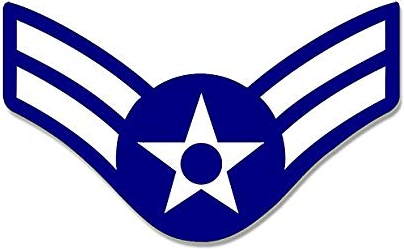 “Here’s a distinctly Lujack story. It’s a little embarrassing — Larry and I got caught in a fib — but it’s funny and it happened so long ago. In the mid-sixties, both of us were serving part-time in the Air National Guard. A young lady from a high school newspaper was interviewing us. She asked: ‘So you guys are in the Air National Guard’? To which Larry, in a serious tone of voice, replied ‘Oh yeah, we’re both jet fighter pilots.’ That should have been the punch line to a quite hilarious inside joke, except the kid had a daddy. She went home and told daddy about the thrilling DJ ‘flying aces’ she had met. Daddy, and this was bad news for our side, was an officer in the Air Guard. He doubted our honesty, which led to a status check of airmen first class Lujack and Murphy. Soon our adoring fan was told that her shining deejay heroes were dullard teletype operators. Our sexy façade was completely stripped away and the young lady’s bubble was burst!
“Here’s a distinctly Lujack story. It’s a little embarrassing — Larry and I got caught in a fib — but it’s funny and it happened so long ago. In the mid-sixties, both of us were serving part-time in the Air National Guard. A young lady from a high school newspaper was interviewing us. She asked: ‘So you guys are in the Air National Guard’? To which Larry, in a serious tone of voice, replied ‘Oh yeah, we’re both jet fighter pilots.’ That should have been the punch line to a quite hilarious inside joke, except the kid had a daddy. She went home and told daddy about the thrilling DJ ‘flying aces’ she had met. Daddy, and this was bad news for our side, was an officer in the Air Guard. He doubted our honesty, which led to a status check of airmen first class Lujack and Murphy. Soon our adoring fan was told that her shining deejay heroes were dullard teletype operators. Our sexy façade was completely stripped away and the young lady’s bubble was burst!
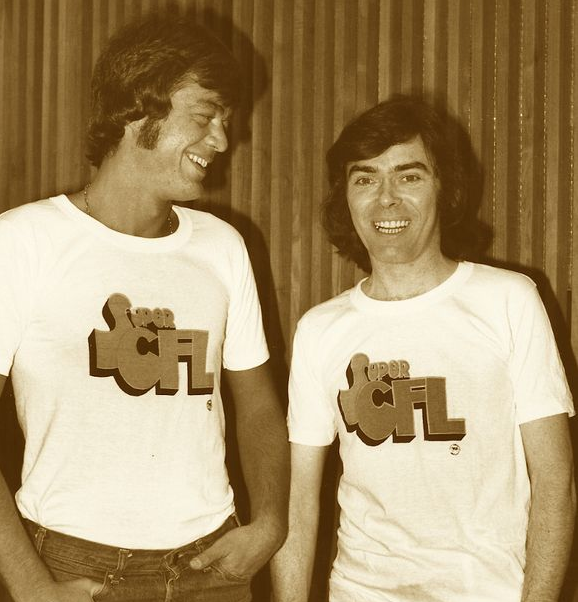

“Fighter pilots! Geez Larry, what were you thinking? When I was in Portland, I wouldn’t even go skyward in the KISN flying car. I considered it unsafe at any speed, a proverbial death trap. Truth is Larry and I probably could have explained to the teen girl how KJR’s Associated Press teletype news wire worked, but we knew zip about flying into the wild blue yonder. It is an understatement to say that Lujack and I had lots of fun. In the early ‘70s, we were reunited at WCFL in Chicago. In 2013, the last year of Larry’s life, we spoke often.”
They Called Me ‘Victor Vincent’
 “I had a reputation for saying and doing wacky stuff. On Sunday mornings, KJR ran a 15 minute ‘Salvation Army Show.’ It was a public service freebie full of sad and depressing stories of men with serious drinking problems. Ultimately, these hopeless cases of humanity entered the Salvation Army Rehabilitation Center and found sobriety,” Murphy said.
“I had a reputation for saying and doing wacky stuff. On Sunday mornings, KJR ran a 15 minute ‘Salvation Army Show.’ It was a public service freebie full of sad and depressing stories of men with serious drinking problems. Ultimately, these hopeless cases of humanity entered the Salvation Army Rehabilitation Center and found sobriety,” Murphy said.
“I became aware of the show when I was visiting Mike Phillips at KJR in 1963. We overheard Lee Perkins reading an unusual ‘live’ script. I asked Mike what in hell Lee was doing. He said that was the ‘Salvation Army Show.’ I thought….’Huh’? Moving ahead two years, Jerry Kay had the Salvation Army show, and I was the new hire at KJR. Jerry called himself ‘Peter Hook’ and he read the script in an overly dramatic and tongue in cheek manner.

“When Jerry left for Chicago, I was handed this plum of a show. By then it was prerecorded for broadcast on the weekend. The storyline always had a nice outcome and it was highly inspirational. However, it was deathly boring. I spiced it up by calling myself ‘Victor Vincent.’ Initially, I played around with the master scripts from the Salvation Army. I gave up on that hopeless endeavor and started making up my own stories. They were heavy on tales of irresponsibility and drunken depravity.
“I was pleasantly surprised to learn my Sunday morning public service show had gained a cult following. Fans included deejays Steve West and Bruce Cannon, who listened on their way to Army Reserve Drills. University of Washington students wrote in that they never missed an episode — even if they had to stay up all night or get up at the crack of dawn. With my creativity fueled by listener enthusiasm, the stories I fabricated got crazier and sillier all the time.
“It became obvious I was tiptoeing on an increasingly slippery slope. As a precautionary measure, I admonished staff to immediately erase the tape after the show had aired. The evidence must be destroyed! The responsibility for wiping the tape fell to the Sunday morning DJ.
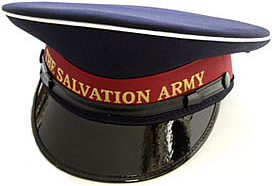 “All of this fun had an abrupt ending. On a weekday, top brass from the Salvation Army unexpectedly arrived at KJR’s doorstep. They wanted to hear a replay of the most recent show. God only knows what I’d said and done that week. But I guess they found out: The Sunday jock neglected to erase the tape. Therefore, all parties reviewing my work got a heavy dose of Victor Vincent. I assure you my stories bore NO resemblance to the original scripts. The Salvation Army execs admitted the show was ‘well done’ and entertaining, but they said ‘it had deviated too far from the organization’s original intent.’ Then they pulled the plug!
“All of this fun had an abrupt ending. On a weekday, top brass from the Salvation Army unexpectedly arrived at KJR’s doorstep. They wanted to hear a replay of the most recent show. God only knows what I’d said and done that week. But I guess they found out: The Sunday jock neglected to erase the tape. Therefore, all parties reviewing my work got a heavy dose of Victor Vincent. I assure you my stories bore NO resemblance to the original scripts. The Salvation Army execs admitted the show was ‘well done’ and entertaining, but they said ‘it had deviated too far from the organization’s original intent.’ Then they pulled the plug!
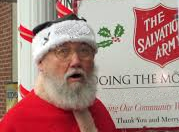 “Ironically, after all my fictitious and goofy scenarios, it was a minor factual error that sank Victor Vincent. In that final episode, Vic had been ranting about the inequity of South Center Mall management banning the Salvation Army Santa Clauses from bell ringing for Christmas donations. As it turned out, all of the bell ringing Saint Nicks were part of a different arm of the Salvation Army….and the Rehab Center wanted to disassociate from that part of the organization. Wow, how on earth was Victor Vincent supposed to know that the upper echelons at the Rehab Center didn’t believe in Santa Claus?
“Ironically, after all my fictitious and goofy scenarios, it was a minor factual error that sank Victor Vincent. In that final episode, Vic had been ranting about the inequity of South Center Mall management banning the Salvation Army Santa Clauses from bell ringing for Christmas donations. As it turned out, all of the bell ringing Saint Nicks were part of a different arm of the Salvation Army….and the Rehab Center wanted to disassociate from that part of the organization. Wow, how on earth was Victor Vincent supposed to know that the upper echelons at the Rehab Center didn’t believe in Santa Claus?
“Since the show was always erased, except for that one time and that tape is long gone, I am unable to share any of Victor’s original weekly broadcasts. Yet, good news abounds: Many years ago, I resurrected one of Vic’s original bits for a long running Christmas special created by well-known radio programmer and producer Jim Hampton. When Jim learned of my estrangement from Victor, he came to my rescue by sending a copy of that remaining recording. Vic’s voice was always my own, unaltered and not presented as a comical character, but on the ‘Salvation Army Show’ the script was more outlandish than on the syndicated Christmas special. This next clip will do just fine. It’s an excellent example of Victor Vincent’s innate, or maybe it’s inane or insane, wisdom.”
Victor Vincent on the logistics of being Santa Claus
![]()
Smoke! Smoke! Smoke! (Phil’s Cigarette)

Murphy said one of his favorite alter egos at KJR was a character known as Col. Phillip Yarborough. “Phil was a southerner with the lofty goal of helping big tobacco companies recover from the recent (April 1970) federal ban on cigarette advertising. Although Phil knew I couldn’t play cigarette ads on-the-air, he’d appear on my show occasionally and suggest ways I might assist 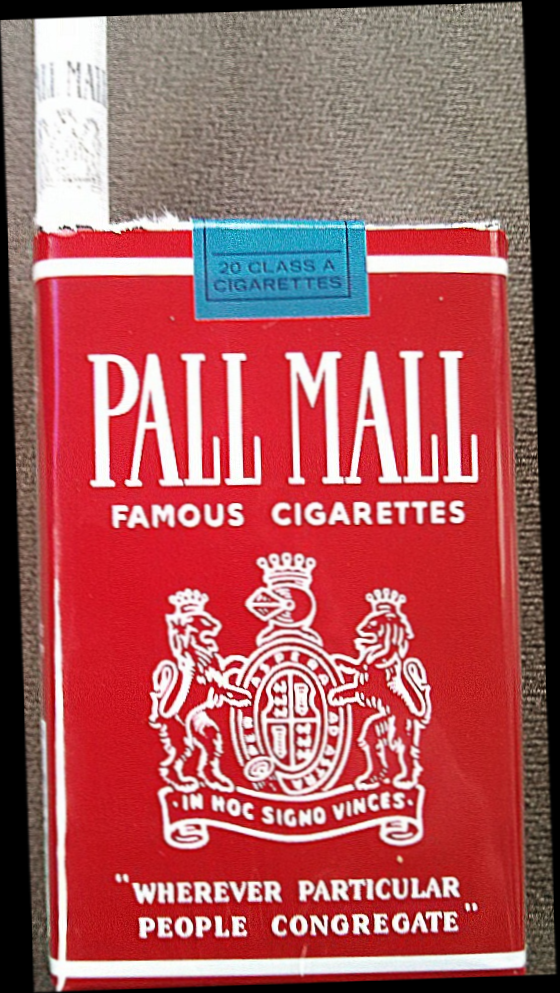 the ‘ailing’ tobacco industry. The ‘Gone With The Wind’ theme always played in the background as the Colonel was expounding on-air. When I asked him to explain the significance of that theme song, he said it was for effect — to emphasize that cigarette advertising was ‘Gone With The Wind.’
the ‘ailing’ tobacco industry. The ‘Gone With The Wind’ theme always played in the background as the Colonel was expounding on-air. When I asked him to explain the significance of that theme song, he said it was for effect — to emphasize that cigarette advertising was ‘Gone With The Wind.’
“He fondly recalled the classic cigarette jingles of days gone by. If I played ‘The Magnificent Seven Theme,’ which was integral to the ill-fated Marlboro Man ad campaign, Phil stood at full attention and saluted. A benchmark moment in his life was the day he learned the proper spelling was ‘Pall Mall’ versus ‘Pell Mell’ cigarettes.
“Col. Phil was adamant that my listeners longed to hear the catchy cigarette jingles from yesteryear. The guy loved cigarette jingles like I loved The Beatles. Phil swooned whenever he heard his all-time favorite jingle, as presented here.
Phil’s favorite song (Cigarette jingle) Run time :30
“Phil acknowledged the grammar was flawed in his beloved jingle — it should have been ‘Winston Tastes Good ‘AS’ a Cigarette Should.’ No doubt about it, Phil was a deep thinker with an inquisitive intellect.
“After the federal cigarette ad ban went into effect, KJR ran a few ‘Stop Smoking’ announcements. The main reason Phil showed up on my show, far as I could tell, was to try to persuade me to skip these anti-tobacco PSAs. They were scheduled on the program log, but he’d hint around that maybe ‘once in a while’ I could simply FORGET to play them. He said there might be a ‘little something’ in it for me if I became just a ‘little bit’ forgetful. Phil never explained what that ‘little something’ might be, but once he asked if I’d like to indulge in an ‘all expenses paid weekend in Vegas’? Not to worry. I was in no danger of being fingered for payola, because the Colonel was only a figment of my imagination. Of the many characters and sidekicks I created over the years, Phil was among my favorites.”
Tom no longer has recordings of Col. Phillip Yarborough. But we’ve located two funny, and ‘typically Murphy,’ bits from 1969. The first was inspired by the behavior of the University of Washington football coach, who had a reputation for unjustly suspending his players. The second is a timely spoof of transcendental meditation, referred to here as “transactional” meditation, from the era when The Beatles were training with the Maharishi Mahesh Yogi. Tom’s on-air guru — the Mahashish (as in hashish) Thug Yogi — was scripted and voiced by Mike Mates, a University of Washington student. (Click here to read more about Mates’ role at KJR.) Tom Murphy’s yogi might have been low budget, but he sure could sell his Ten Chapattis of Awareness.
Cut 1: University of Washington football player and coach (1969), Cut 2: Mahesh Thug Yogi (1969) Run time 2:54
Gary “Shannon” Burleigh

Gary Shannon recalls: “I can relate pretty well to Tom’s story about Ol’ Col. Phil and his theme of ‘smoking’ at KJR. “Here’s what I remember. One day I walked in the control room and there was Tom with a box of the other colonel’s fried chicken (Col. Sanders, you know) open on the console. As he flipped on the mic switch with one hand, Murphy was waving an original recipe drumstick with his other. He was so casual and relaxed. I was just the opposite — way too keyed up and nervous to eat during my show. That’s where ‘smoking’ came into play: To deal with the stress I sat in my chair at the board and chain smoked.
“To me, Tom Murphy is and was an exceptional guy. He was the epitome of cool and collected on the air. Tom wasn’t easily rattled. He loved himself and everybody loved him back. Not only was Murphy fun to listen to, he was fun to be around in real life. In the studio, Tom loved having a live audience. Any visitors, who gained admittance to the KJR control room, got to watch him do two performances at once: 1) his on-air persona….and 2) his hilarious off-mic one-on-one banter with his guests. He really should have sold tickets. ‘World Famous’ is a natural talent and so damn easy going and funny. That’s a godsend. I will always treasure his friendship.”
![]()
Shot Down at the Space Needle
Despite Gary Shannon’s reference to the hilarity Tom’s humor could generate, ‘World Famous’ said he knows of one time when his wacky sense of humor probably cost him a job.

“When we were at KJR, the late Emperor Lee Smith told me he’d received a call from Tony Cox, the National PD of Westinghouse Broadcasting. Cox was on a listening tour and he’d heard the ‘Emp.’ Cox wanted to take him to breakfast. ‘Emp’ chose his favorite place, The 13 Coins. Over table talk, Cox asked Emp if there were any other Seattle jocks he should check out. ‘Emp’ told him to listen to my afternoon gig. Cox decided he liked my style and the PD of WIND in Chicago flew out to give a listen and to meet me. “WIND had just hired Robert W. Morgan for mornings and they thought it might be good to bring in someone new for afternoons.
“Well, here’s the background. The Palestinians had just blown up a Pan AM 747. The plane was empty, as in no passengers and nobody was killed, so it wasn’t a catastrophic incident. At the same time, Pan Am was running a spot with a jingle asking ‘What Have We Got That No Other Airlines Got.’ After that very phrase in the jingle, I stopped the cart and said ‘One Less 747.’ Then I pressed the play button again. After my show, I was dining with Tony Cox and the WIND program director, Bob Moomey, at the Space Needle. The meal and chit chat were going nicely until Moomey brought up my bit about the Pan Am 747. He was put off by it and said that kind of tasteless comment would never be tolerated by WIND management. When he laid that on me, I sensed that my potential new job was going nowhere. I replied with strong emotion that ‘I wasn’t currently working for WIND. Was I’? Moomey asked how a pro like Pat O’Day (KJR’s PD) would have reacted if he’d heard that off-the-wall bit. I told him the honest to God truth, Pat had heard it and he immediately came upstairs to the control room laughing and said ‘Murphy you really topped yourself with that one.’

“I don’t think Moomey believed me, but I explained that KJR was different than most radio stations — management actually encouraged quirky humor. I assured boss man Tony Cox and his highly skeptical PD that, if given a chance, I could intuitively identify humor that would be ‘suitable’ for WIND. I was not offered a job in Chicago and, as far as I know, neither was Emperor Smith.

“I’ve always thought it ironic that Moomey, as a PD, was so sensitive to my 747 bit. Yet his new hire, Robert W. Morgan, didn’t have a reputation as being one of the most restrained of radio personalities. For the record, I made it to the Chicago market, and WCFL, on New Year’s Day 1973. After a year and a half at that job, I went across town to WMAQ, until they flipped to a country format. That was the beginning of a stressful time of hopscotching between Chicago and WSAI-Cincinnati (hired there by my friend Robin Mitchell, who had been PD of KOL from 1967-‘72), before settling for a year at WIXI in Cleveland. In Aug. 1976, I was able to relocate to Los Angeles — where I wanted to be — and a job at KGIL radio. Coincidentally, before leaving Chicago, I did weekends at WIND — but Bob Moomey was no longer the PD. I am certain my old alter ego, Cigarette enthusiast Col. Phillip Yarborough, would have described my departure from Chicago as ‘Gone FROM The WIND.’

“In retrospect, it’s a good thing Bob Moomey wasn’t listening when I did a Christmas bit back in the Cold War era. I was a hard-nosed interviewer and that came in handy when interviewing Santa Claus. I asked Mr. Claus if he delivered toys to children in Russia. Of course, his trying to come across as the politically correct Merry Christmas Elf, Santa said he did. That gave me my opening: I asked if he didn’t realize that he was ‘aiding and abetting Little Commies.’ Santa was obviously stunned by my unflinching attack, so he made up a lame excuse along the lines of ‘they were children first and little commies second.’ The rest of his verbiage was like reading words off a Christmas card ‘Peace and Goodwill to Everyone Everywhere’ and all the usual ‘tis the season’ hooey. I said ‘Santa, your attitude sure explains why you wear that ‘red’ suit all the time.’ Those were the days. I am sure that bit would have gone over really well at WIND.”
![]()
Hey, What Happened to My Car?
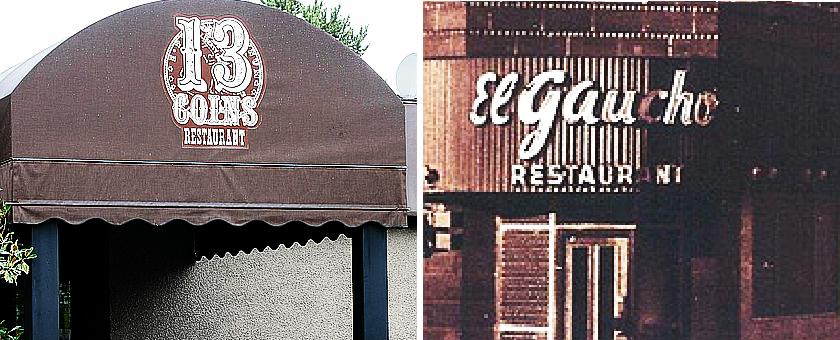
“A big part of the 1960s KJR lifestyle was social networking — but back then it had nothing to do with computers and the internet,” Murphy explained. “We jocks (jocks being all guys in those days) would hang out with our wives or conversely the jocks would hang out with one another. It worked both ways and, undoubtedly, the record promoters were part of that hip social fabric or mix. In Seattle, probably the favorite hang outs were The El Gaucho, 13 Coins, The Golden Door, The Blue Eagle, The Benbow Inn, The Polynesian and The Captain’s Table. Lots of social networking, which involved consuming alcohol and partying, took place at those top night spots.
“Pat O’Day and I were having cocktails at The Golden Door. Pat realized I had been, as the old expression goes, over-served. He put me in a cab and said he’d pay my fare home, which was substantial since I lived in Redondo. The next morning my wife, Connie, drove me back into the city to retrieve my car. As we pulled into The Golden Door parking lot, it was apparent that someone had bashed into my car. The bumper was messed up, along with part of the grill and a headlight. Well, even if my car was bunged up in Seattle, at least it was still there. and that beats what happened in Portland. However, before I describe that incident, I hope readers haven’t gotten the wrong idea about me. I was not a drunken and depraved crazy, like those guys Victor Vincent knew. To the contrary, in 1969 I was such a wholesome role model that the President of the United States enlisted me to be a DJ representative in the ‘War on Drugs.”
“World Famous” was Called to Action
“When I was invited to attend the White House conference on ways to curb drug use among the nation’s youth, I learned I would be serving alongside Murray the K and Cousin Brucie Morrow, two mega famous jocks from New York City. It was a once in a lifetime experience and all of the jocks were well known nationally, including the famous soul singer and DJ Rufus Thomas. In case anyone is assuming otherwise, let me “make it perfectly clear,” as Dick Nixon often said, that my trip to the White House had nothing at all to do with President Richard Nixon’s resignation nearly five years later. All the participating deejays posed for an official group photo inside the White House. Also, I saved a write-up from Broadcasting Magazine (Sept. 1969).”

![]()

“Now, I shall return to the harrowing story about my automobile misadventures in Portland. In 1962, after my shift, I was departing KISN’s 10th and W. Burnside studio in downtown Portland. I walked outside onto the street to get in my 1961 Impala Super Sport. The car was sporty as advertised, but it had a tendency to accumulate speeding tickets that I had to pay. Anyway, that night I realized my Impala was nowhere to be seen. I was completely sober at the time and in disbelief. It was slowly sinking in that my car had been stolen. This theft took place prior to the KISN deejays occupying the street level corner window. If I had been jocking in that panoramic ‘window on the world,’ I could have kept an eye on my car. I went back into the building to use the phone to call the police — this was in the caveman days before cell phones. The Portland Police assured me they’d get right on it. Since I couldn’t drive home without wheels, I decided to call around to all of the overnight jocks in Portland. After identifying myself as ‘Tiger Tom,’ I said I would be grateful if each of them would help me out by announcing that my car had been stolen. I chose that approach — appealing to the solidarity of fellow members of the Radio Artists Community — instead of debasing myself by weeping over my missing four on the floor Impala with triple carburetors. It worked out: Every jock in town came to my aid. It didn’t take long for the cops to spot my car and nab the thief. It ended up the joyrider was a sailor and Portland police promptly passed him off to military police and the guy was carted off to the brig. Unfortunately, the sailor might have known a lot about boats. Yet he was a novice at hot wiring cars and his sloppy handiwork mucked up the Tigermobile dash and I had to pay cash to get it fixed.”
Teen Dances, “Teen Spectaculars” & “Teen Fairs”
KJR was always a highly promotional radio station. In its Golden Years, Pat O’Day was the impetus behind many of the station’s most memorable promotions. O’Day was also a teen dance impresario and a concert promoter, principal of the firm Pat O’Day and Associates. It’s not surprising that KJR and O’Day’s teen events were married to one another.
KJR promotions made the Spanish Castle Ballroom, in nearby Des Moines, a legendary dance hall. The talent at O’Day’s teen dances featured primarily local and regional bands such as The Fabulous Wailers, The Sonics, Merrilee and the Turnabouts, The Springfield Rifle, The Emergency Exit, and The Bards.

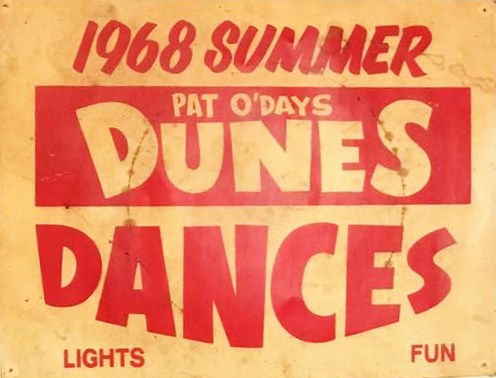

O’Day and Associates, which included fellow KJR jock Dick Curtis, ran the most successful teen dance circuit in Washington State. At the peak of the ’60s craze, in cities and towns across the state, Pat O’Day and his crew were running 50 dances or Battles of the Bands every week. O’Day did so well that in 1967 he built his own dance hall: “Pat O’Day’s Dunes,” in the coastal resort town of Westport (see Dunes poster). The grand opening acts at his dance hall were “The Sonics” and Jim Valley (“Harpo”) of Paul Revere & The Raiders.
The teen dance ads that ran on KJR were usually prerecorded on cart, but sometimes they consisted of ‘live’ copy — so jocks could ad lib and embellish. In this live spot on KJR, Pat O’Day is promoting the “1966 Pacific Northwest Battle of the Bands Championship.” The talent O’Day was bringing in was impressive.
Pat O’Day on KJR, Battle of the Bands Championship (Summer ’66) Run time 1:42
![]()

KJR’s Teen Spectaculars,” and the big “Teen Fairs,” popular in the mid to late ‘60s, were offshoots of O’Day’s dance business. Tom Murphy has fond memories of these teen events.

“The ‘Teen Spectaculars’ were actually concerts featuring ‘name’ performers. They were scheduled often and had seasonal names: Spring, Summer, Thanksgiving and New Year’s Spectaculars, etc. The ‘Teen Fairs’ involved not only star performers, but the venue was the gigantic Seattle Center. ‘Teen Fairs’ lasted two days with exhibits and vendors directed toward teens: clothing, cars, cosmetics, athletic equipment and sporting goods. Kids could even shoot hoops at a basketball court. KJR jocks broadcast ‘live.’ One year our primary Top 40 competitor, KOL, submitted and became a ‘Teen Fair’ sponsor.
“Acclaimed bands and performers that appeared at ‘Teen Spectaculars’ and ‘Teen Fairs,’ in the years 1965-’68, included The Beach Boys, Paul Revere & The Raiders, The Righteous Brothers, The Kinks, Gary Lewis & The Playboys, The Yardbirds, The Standells, The Beau Brummels, Sam the Sham & the Pharaohs, Jan & Dean, The Shangri-las, The Grass Roots, Ray Stevens, Ian Whitcomb, Jay and The Americans, Buffalo Springfield, Mitch Ryder & The Detroit Wheels, Canned Heat, The Lovin’ Spoonful, The Mama’s & Papa’s, Suzi Quatro & The Pleasure Seekers, and a number of regionally popular bands such as The Sonics, The Fabulous Wailers, Merrilee Rush & The Turnabouts, Don & The Goodtimes, and The Liverpool Five. At ‘Teen Fairs,’ local bands entertained continuously and the big name acts performed afternoons and evenings on a revolving stage that was decorated with caricatures of the KJR jocks.

“In 1967 and ’68, my wife, Connie, and I were ‘Teen Fair’ vendors. Dick Curtis helped us set up a booth and we sold concert programs — Beatles, Stones, Paul Revere & The Raiders and many others. Roger Hart, my former DJ friend from Portland who managed The Raiders, supplied the programs. We did pretty well in ’67 and not so hot the second year. I think that was a sign of the times. Tastes were changing. Melodic pop rock that was inherently danceable was losing its cool. On the rise was psychedelic rock, drug lyrics, anti-war and anti-establishment protest songs. The great promotional opportunities that came with Teen Dances and Battles of the Bands began to fade and they vanished by the early ’70s. Pat O’Day saw the handwriting on the wall and sold his teen dance business in late 1968. Then he focused on ‘Concerts West,’ promoting top tier concerts the likes of Frank Sinatra, Elvis, Dylan, Hendrix and Led Zeppelin. I emceed many shows for Concerts West — Led Zeppelin, Jimi Hendrix, Creedence Clearwater Revival, Eric Burden & The Animals and others — but never Elvis, Sinatra or Dylan.”
This historically accurate video provides a nostalgic look back at many of the performers who appeared at KJR’s “Teen Spectaculars” and “Teen Fairs.” The photo (video thumbnail) captures the revolving stage at the Seattle Center, adorned with posters of Larry Lujack and Tom Murphy. Viewers can relive lots of good ’60s memories here!
All American Basketball


In the mid-sixties, student governments at local high schools were looking for ways to raise money for student activities. Meanwhile, many radio stations had enlisted clumsy and zany jocks who aimlessly ran up and down basketball courts at high school gyms. Murphy told QZVX that KJR took a different approach:
“The KJR All American team actually had the ability to play competitive basketball. We won almost all of our games. Pat’s theory was spectators would tire of watching consistently hapless and helpless jocks flail about and lose to faculty teams. O’Day’s strategy was to recruit two to three ‘ringers’ for our team. These guys were Seattle sports notables, mainly college basketball stars, who played in each of our games. Some of the ringers on the KJR team went into the pros and one ex-KJR Alumnus joined the Harlem Globetrotters.

“Basically, we wanted our games to look competitive, but we always intended to win. The ‘ringers’ on our team could make that happen. To maintain some sense of drama, our team ‘dogged it,’ and let the faculty whip us until late in the game. Then, to save the day, the ringers became serious about the game and they would ‘just barely’ squeak past the faculty team.
“KJR brought along to each game a handsome four-foot high trophy. If we lost, which was almost never, the trophy was presented to the victorious team. Our uniforms were red, white and blue. We were very much in demand. I remember traveling to three schools a week. To keep it fun, Pat introduced into the games Globetrotters’ stunts and silliness: Pat would get up behind the basket to make a shot, or we’d pass a football onto the court and somebody would run with it. All Star Basketball was good for KJR and good for the schools that received all proceeds from ticket sales. The promotion ran from 1965 until 1974 and we generated thousands of dollars for local schools.
“For the record, a couple KJR jocks were no slouches at basketball. Norm Gregory, a giant at 6 foot 5, had played high school and college ball. Modestly speaking, I can say the real ace was yours truly. I was impressive. Even the ringers on our team were in awe of the speed, superior coordination and overall skills of ‘Crazy Legs’ Tom Murphy. Plus, I looked really good in my basketball outfit. All joking aside, since I couldn’t play basketball worth a damn, I decided to become the team ‘fool.’ Clowning is a skill I easily mastered. Historically speaking, I was the most successful ever of any 135-pound 5 foot 8 player, who couldn’t dribble, shoot or even pass a basketball with any reasonable expectation of it going to whom or toward what I was aiming at.”
All American Basketball Promos (Lujack, O’Day, Murphy (1966) Run time 2:32
Thunder on the Water
 The unlimited hydroplane races came to Seattle’s Lake Washington in 1951 –when that years ‘Gold Cup’ race took a hiatus from running in Detroit and was moved to Seattle for the first time. That was huge news in the Pacific Northwest. In those days, any Seattle sports teams were minor league. Sure, the University of Washington Huskies football team might have made it to the Rose Bowl, but that was iffy. The arrival of the hydro races gave Seattle its first big time sporting event.
The unlimited hydroplane races came to Seattle’s Lake Washington in 1951 –when that years ‘Gold Cup’ race took a hiatus from running in Detroit and was moved to Seattle for the first time. That was huge news in the Pacific Northwest. In those days, any Seattle sports teams were minor league. Sure, the University of Washington Huskies football team might have made it to the Rose Bowl, but that was iffy. The arrival of the hydro races gave Seattle its first big time sporting event.

KJR’s involvement with the hydros, as is the situation with much of KJR’s history, leads back to Pat O’Day. In 1968, seventeen years after the first hydros roared in Seattle, O’Day was in Dallas on business with his client Jimi Hendrix. A call came in from Seattle’s independent TV station, Channel 13. They TV wanted Pat, who was Seattle’s most famous radio DJ at the time, to do play-by-play of the upcoming ‘Seafair Trophy’ race (a big part of Seattle’s annual Seafair Festival). O’Day had loved the hydros since he was a kid in Bremerton, so he jumped at the opportunity. There was a complication: The race commenced in 14 hours. After hopping a plane, and upon landing in Seattle, Pat learned he (all by his lonesome) was the ‘talent.’ Other than technicians, nobody else had been recruited to help with the broadcast or to provide color commentary. O’Day talked his friend, the popular singer Wayne Newton, into making a guest TV appearance during the race. Pat’s young son, Jerry, who was a skilled artist, created hydro cutouts that served as visual aids. O’Day’s hydro broadcast was a hit! It received rave reviews.
In the summer of 1969, with O’Day in the lead role, KJR put together a hydro broadcast team. Over the years, the race changed names and currently it’s the ‘Homestreet Bank Cup.’ In the world of media, despite ownership and format changes (KJR’s format all-sports since 1991), KJR Radio and KIRO TV held the exclusive broadcast rights to the thunderboat races in 2019. In the early days of the race, exclusivity was not an option: Several TV and radio stations regularly broadcast live from the hydro races. In summer the unlimited hydroplanes still roar in Seattle. But it’s not the colossally popular event that attracted hundreds of thousands of spectators in the 1960s and ‘70s. Tom Murphy was there when hydro coverage first came to KJR.
 “We were the dominant Top 40 station. AM radio was king. During the race ‘heats,’ as the laps were called, we went live to the race. Between the heats we played records. Every year the KJR jocks assisted Pat. I was on the broadcast team in 1969 and ’70. Some of the regulars at the time were Norm Gregory, Gary Shannon, John Maynard, Tim Burgess and, back in the studio, Bobby Simon. I was there, too. For some reason, both times I was involved with the race, Pat put me in charge of color commentary. It wasn’t because I loved the event. The aircheck that follows is compelling evidence that I knew nothing about hydros, and that I didn’t take any of it too seriously. Based on his remarks back at me during both broadcasts, it was obvious that Pat was unimpressed with my breadth of knowledge and insight into the sport. He said my humor was a ‘hit’ and he enjoyed my contributions to the race coverage.”
“We were the dominant Top 40 station. AM radio was king. During the race ‘heats,’ as the laps were called, we went live to the race. Between the heats we played records. Every year the KJR jocks assisted Pat. I was on the broadcast team in 1969 and ’70. Some of the regulars at the time were Norm Gregory, Gary Shannon, John Maynard, Tim Burgess and, back in the studio, Bobby Simon. I was there, too. For some reason, both times I was involved with the race, Pat put me in charge of color commentary. It wasn’t because I loved the event. The aircheck that follows is compelling evidence that I knew nothing about hydros, and that I didn’t take any of it too seriously. Based on his remarks back at me during both broadcasts, it was obvious that Pat was unimpressed with my breadth of knowledge and insight into the sport. He said my humor was a ‘hit’ and he enjoyed my contributions to the race coverage.”
O’Day and Murphy at the hydro races (1970, edited) Run time 4:21
Post Script: Tom’s color commentary at this very race in 1970 landed him a job in LA. It wasn’t his enthusiasm for the sport that impressed Dick Sainte, a jock Tom knew from his days in Portland. Instead, Sainte thought Tom’s comments were “funny as hell.” Six months later, when Sainte became PD at KRLA, he hired Murphy away from KJR.
KJR said “Boo to You”
KJR’s promotional strategy included giving back to the community in a meaningful way. In 1963, the Variety Club was hoping to raise money for Seattle’s Children’s Hospital. It was autumn of the year, prior to Halloween, when Pat O’Day was brainstorming fundraising ideas with two friends from Variety Club International.
O’Day suggested opening a KJR Haunted House. It could be heavily promoted on KJR, they’d charge admission, and proceeds would be donated to Children’s Hospital. The idea was a go. Organizers wanted a scary haunted house, not a corny kid’s attraction. Large houses were chosen, so there could be at least eight rooms of blood curdling and skin crawling terror. The haunted houses featured an abundance of moaning, screaming and crying. One year, a granny figure was tied to a chair and live rats crawled inside the catcher’s mask that was strapped to her face. Occasionally, the staff would slather granny’s face with cheese to pique the interest of the rodents.![]()
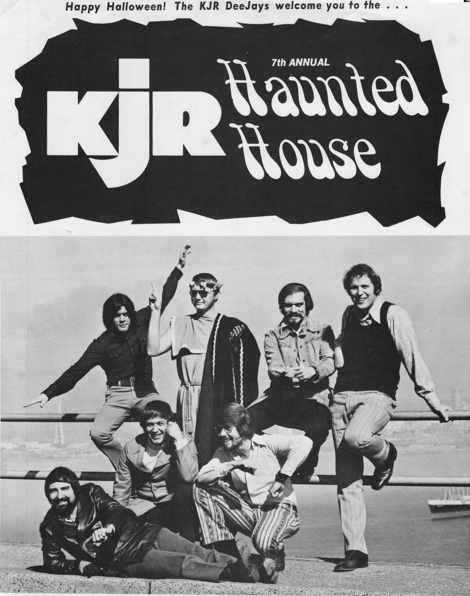
The KJR Haunted House was a smash. Crowds would line up for blocks as the strong of heart waited to gain entry to the house and to meet the KJR jocks, some of whom were always onsite. The KJR Haunted House operated for more than four decades. In that time, the station collected and presented thousands of dollars to Variety Club and Children’s Hospital.
“All of the KJR jocks made appearances at the Haunted House. I don’t know if you would specifically call us ‘greeters,’ but we were there at the entrance to the house and we for sure greeted folks. I appeared at the haunted house for several years, don’t recall exactly how many times. Several years after my KJR days, when I was in LA at KIIS-FM, the station promoted a Haunted House (‘The Factory of Nightmares’) and it felt like Déjà vu all over again,” Murphy explained.
KISN vs. KJR — That Dangling Question
Tom Murphy was a popular KJR personality, and before that he brought huge ratings to KISN in Portland. Interested parties and critics have speculated as to which of these two Northwest legends was the better radio station. Since Tom was at KISN and later at KJR (5 ½ years each), he agreed to tackle that question.

“Frankly it is difficult to even venture a guess as to which station was ‘best’ since they were quite different. My contribution is to offer personal observations noting the individual strengths and weaknesses of the two stations. KISN was a full blown Top 40 presentation (very McClendon, Todd Storz). I don’t recall KISN being all that tightly formatted. It was just the usual rules back in those days….keep things moving, upbeat delivery, no really long bits, don’t play two female artists in a row, never play two slow songs or instrumentals in a row, never step on the vocals, and never still be lollygagging at the front door talking to kids when the record is ending. That one applied mostly to the jock formerly known as “Tiger” Tom Murphy.
“I imagine all of the above would have been similar to KJR’s presentation at that same time. Two years prior to my move to Seattle, I had heard KJR only once on a weekend when I was visiting Mike Phillips. The only other KJR jock I actually met at that time was Jerry Kay.
“KJR would have had the advantage as far as stability of on-air staff. KJR’s management was more into encouraging the jocks to become ‘personalities,’ but to be fair KISN had some high-profile and crazy jocks, too. I think KJR probably had a better reputation in the local community. Early on, Don Burden, KISN owner, was abrasive toward some of the Portland locals. Maybe a few of them had it coming, but his brash demeanor didn’t ingratiate the station with the radio or business communities. That was definitely not the situation at KJR. I am convinced that KJR had a stellar reputation in the local community, everybody loved or at least respected KJR.
“If KJR had been in Portland, during the first half of the ’60s, I believe it would have needed to up its game promotion wise. Don Burden poured lots of dough into his promotions to make an impact. He committed to big budgets for contest prizes and to generate excitement. Burden traveled the county extensively in the sixties and, in doing so, he listened to many local radio stations. When he heard something he liked, he ‘stole’ it. And, in that way, Burden came up with some phenomenal promotions. He spent lots of money to make money.
“Another big advantage in the plus column for KJR — it had a much stronger signal, with far wider reach and clearer reception, than KISN’s limited coverage. Those are my initial thoughts on the impossible to answer KISN/KJR question.”


Les Parsons (career jock, production pro, news and PD), worked with Tom Murphy at both KISN and KJR. Les shared his take on the differences between the two legendary Northwest Top 40 stations.
“KISN and KJR were both GREAT radio stations. The KISN studio was a showplace in the heart of downtown Portland. It was not quite the same at the hallowed hallways of KJR. The studio was in the industrial area on 26th Ave. SW — out by the water near the old Lockheed plant (see studio photos above).
 “At KISN we actually gave away a brand new Jaguar XKE!! And so much more! I recall that when Tom was doing middays at KJR it was a different story. The prize closet was never empty, but that was ONLY due to his creativity. Tom awarded many ‘Bissell Mops’ to so-called ‘lucky’ listeners: ‘Please enjoy your mop…and here’s a free record to boot, since you’re a ‘Name It and Claim It’ winner.’ All the 45 RPM discs he gave away to listeners came gratis from ‘The Record Pigs,” as Lan Robert’s called them.
“At KISN we actually gave away a brand new Jaguar XKE!! And so much more! I recall that when Tom was doing middays at KJR it was a different story. The prize closet was never empty, but that was ONLY due to his creativity. Tom awarded many ‘Bissell Mops’ to so-called ‘lucky’ listeners: ‘Please enjoy your mop…and here’s a free record to boot, since you’re a ‘Name It and Claim It’ winner.’ All the 45 RPM discs he gave away to listeners came gratis from ‘The Record Pigs,” as Lan Robert’s called them.
Tom Murphy said he enjoyed creating promotions that were fun, but on the ‘cheap’ side.
 “That mop promo was called ‘Tom Murphy’s Mid-Day Prize Bonanza.’ I used to give away those Bissell brand mops. Honestly, I don’t remember ever seeing one myself, but Bissell mops had to be the very LEAST in the way of a glitzy and exciting prize. Primarily women listeners called in. They used to play along and rhapsodize about how a Bissell mop sure beat the heck out of a gauche prize like a trip to Hawaii.
“That mop promo was called ‘Tom Murphy’s Mid-Day Prize Bonanza.’ I used to give away those Bissell brand mops. Honestly, I don’t remember ever seeing one myself, but Bissell mops had to be the very LEAST in the way of a glitzy and exciting prize. Primarily women listeners called in. They used to play along and rhapsodize about how a Bissell mop sure beat the heck out of a gauche prize like a trip to Hawaii.
“Another no cost promotion I ran at KJR was called ‘Two of Yours for One of Mine.’ Once again, it was aimed at women. I knew the ladies favored Elvis records. So we would go on-the-air and trade music. I’d agree to play two Elvis songs for them, if they agreed I could play one Dylan or Beatles song for myself. It was silly, but the back and forth banter was usually amusing.
“Speaking of low budget, I ran a contest on KJR in the late ’60s called ‘Smart or Dumb.’ This was easy on the promotion budget. A listener would call in and answer a question: If he or she got it wrong, then that contestant was given an inconsequential prize. And if the contestant got it right, then he or she was still awarded an inconsequential prize.“
“Smart or Dumb,” Tom Murphy (Fall 1969) Run time 1:36
Tom was part of that amazing team of deejays that made up ‘KJR’s Golden Years.’ Larry Lujack called mid-sixties KJR (with Lan Roberts, Dick Curtis, Pat O’Day, Larry Lujack, Tom Murphy and Jerry Kay) “the best rock ‘n’ roll radio station that has ever existed.” KJR’s ratings at the time supported Lujack’s claim.
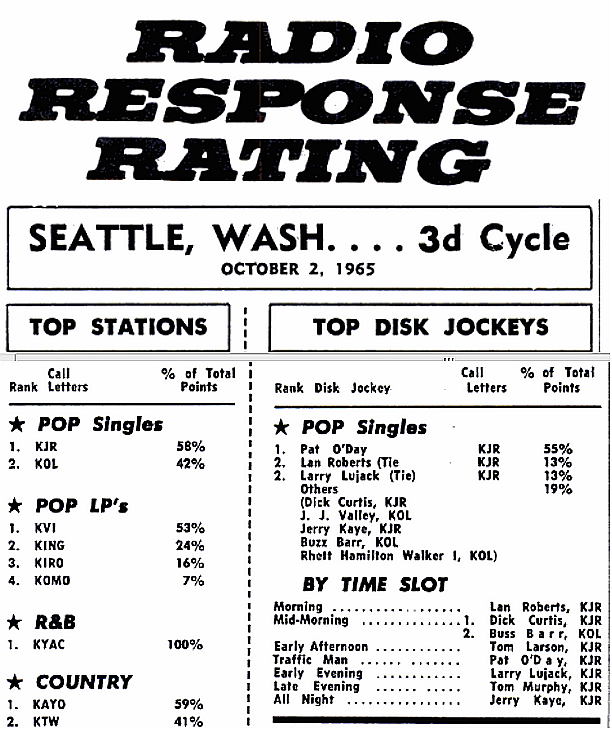
In the next installment of “The Reminiscences of ‘World Famous’ Tom Murphy, we’ll look at Tom’s short stay at KRLA in Los Angeles and also at KOL in Seattle, KJR’s only serious competitor in the glory days of Top 40 Radio. If you haven’t watched this video montage, it captures the great sounds and sights of KJR’s Golden Years 1965 & ’66.
Credits: Sam Lawson’s Audio Vault, Pat O’Day Emails and Biography, Jerry O’Day, Norm Gregory’s website, Facebook pages of Jerry O’Day and Tom Lundgren
Presently editor and historical writer with QZVX.COM in Seattle. Former radio broadcaster and radio station owner, 1970-1999. Journalism and speech communications degrees. I enjoy researching articles and online reporting that allows me to meld together words, audio and video. P.S. I appreciate and encourage reader comments and opinions. View other articles by Steven Smith



The photo of the girl on the Teen Spectacular poster was me. I attended Nathan Hale H. S., and was at The Rolling Stones concert at The Coliseum, aka Climate Pledge Arena. Later, Pat O’Day presented me with two tickets to see The Beatles while on air with him at KJR. – Karmann Lange Kaplan
P. S. I met “Tiger Tom Murphy” while in Portland with friends. We all went on a walk “event” with Tom & Ray Orbison.
Cool…thanks for checking in with the info.
Dan….he is in LA. Give me your email and I will send it to him.
I was a “pilot” with Tom Murphy in the Washington Air National Guard (WANG or FANG, As we were also known. Would love to know his whereabouts!!
Dan Gray